“Why band birds? Can’t you detect bird species without capturing them?”
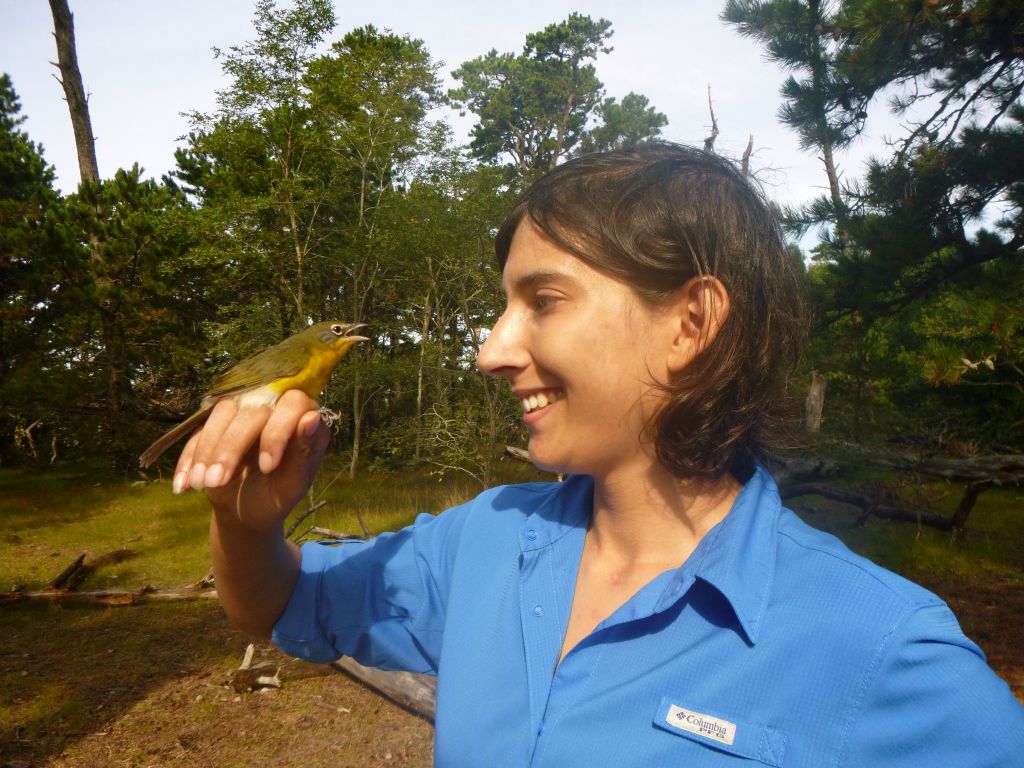
Bird banding assistant Elora Grahame has a “chat” with this banded bird. (photo by James Junda)
These are questions I have been asked several times. As a researcher, I’ve worked on a variety of projects involving both banding as well as point count surveys, which are conducted by standing at a fixed point and counting all of the individual birds you can see or hear in a given period of time. So, is it possible to know all of the bird species occurring in an area by sight and sound alone? To put it simply, no.
This fall’s banding season has really driven that home. Wellfleet Bay Wildlife Sanctuary is phenomenal for the diversity of bird species that occur here, and during migration, you never know when an interesting individual will show up on the property. Despite the banding team’s avid birdwatching efforts, there are some birds that would have slipped under the radar had we not set up our nets.
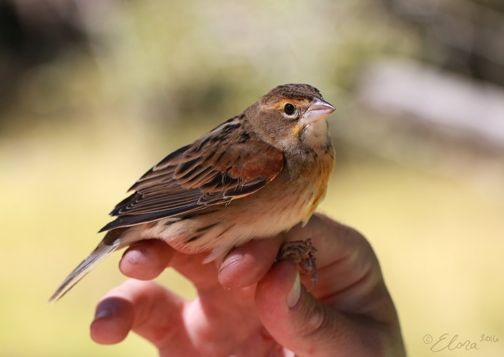
The mist nets were better than the eye (or ear) at discovering this Dickcissel (photo by Elora Grahame)
A prime example is the young male Dickcissel banded in September, who may have passed through the reeds unnoticed had he not flown into the net! Three Yellow-breasted Chats (I’m holding one, above right) were captured this season, and as these skulky birds are much less likely to sing in autumn, seeing or hearing them can be quite the challenge!
Black-billed Cuckoos are notoriously difficult to detect by sight and are similarly reluctant to vocalize in fall, but we managed to band one young bird in October.
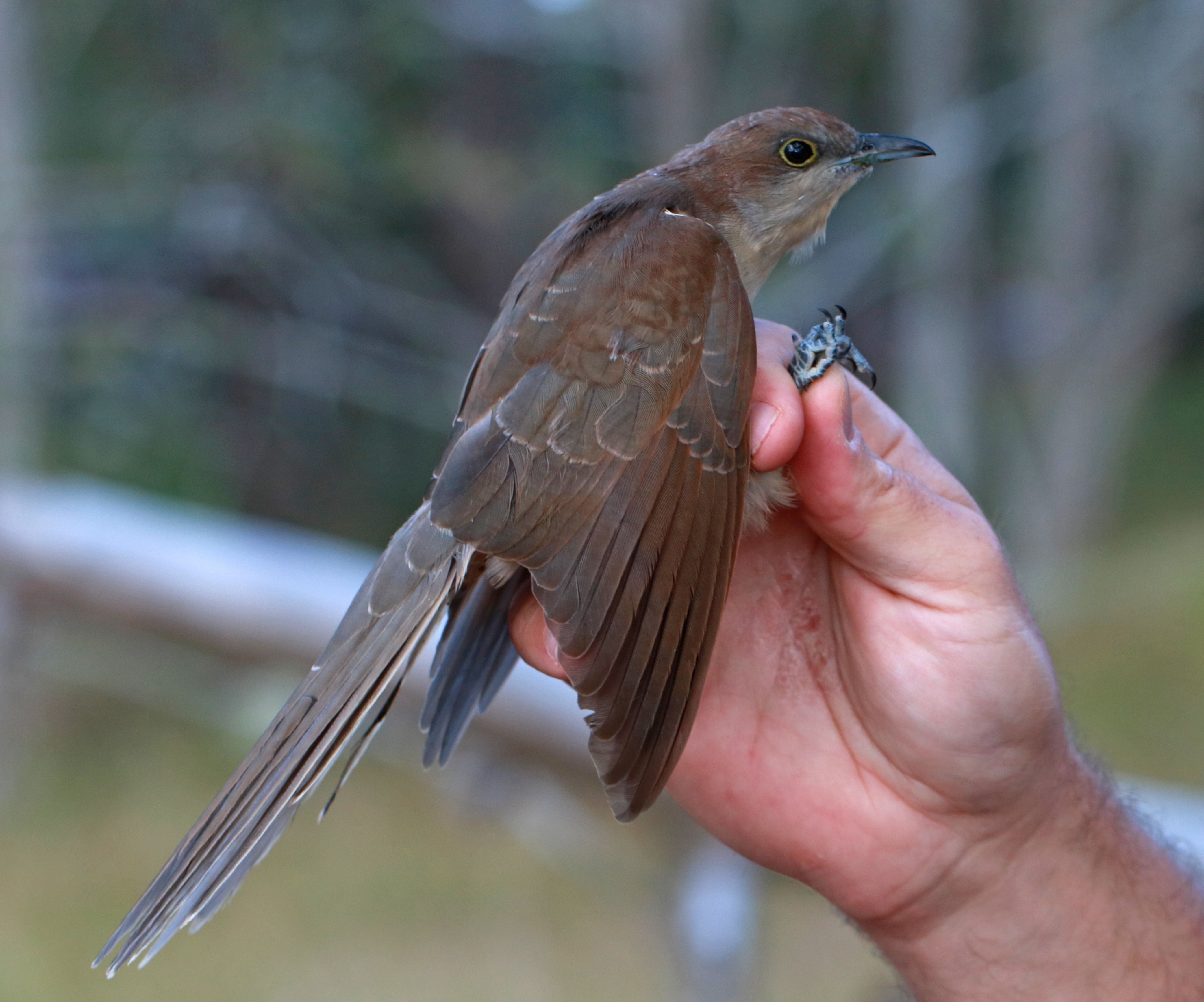
Black-billed Cuckoo (photo by Elora Grahame)
Additionally, we banded two Clay-colored Sparrows—relatively rare visitors from the Midwest—who, given their similar appearance to the regularly occurring Chipping Sparrow, can be difficult to identify through binoculars for all but highly skilled birders.
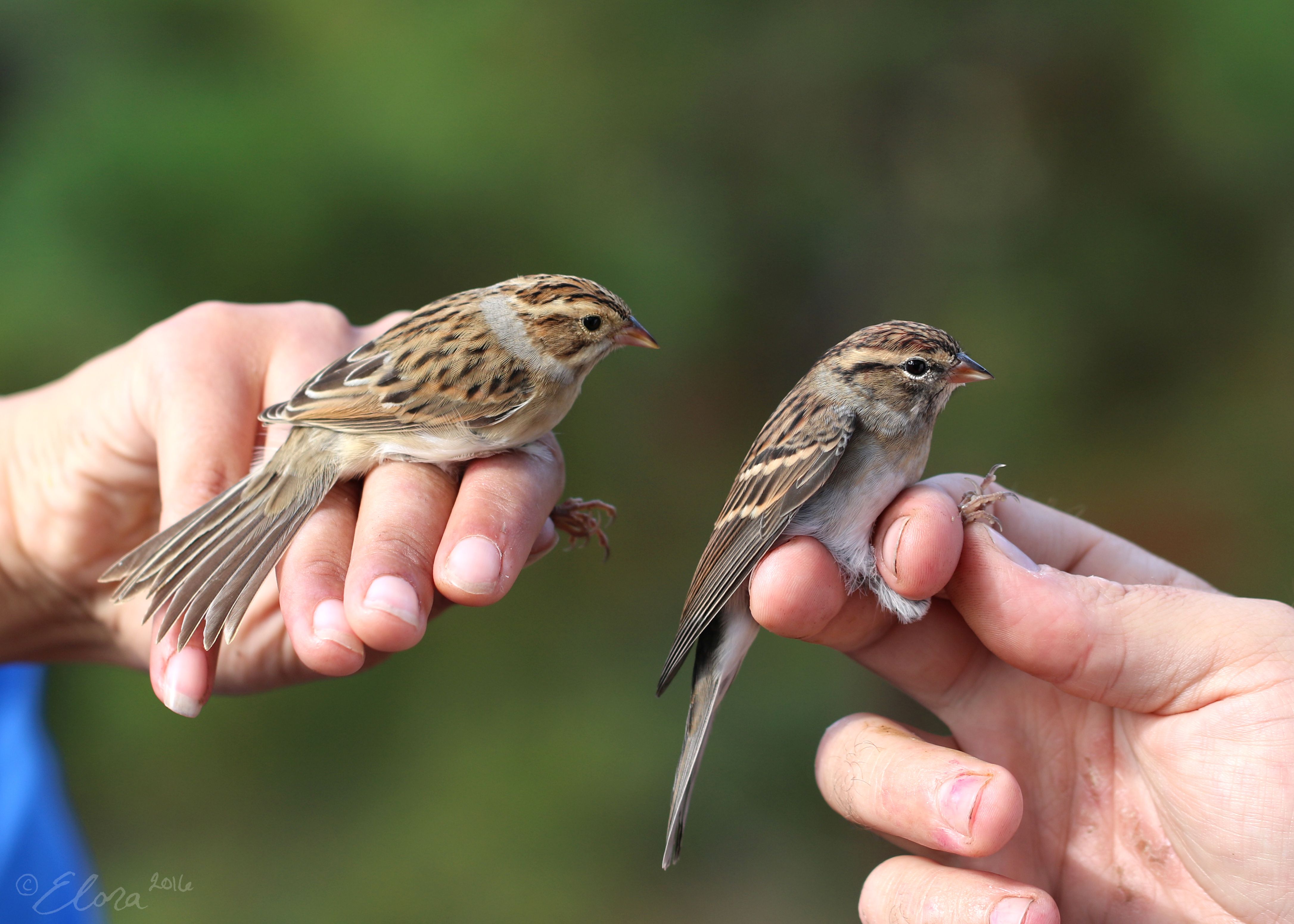
Thanks to this rare close-up view, it’s much easier to see the gray “collar” against the tanner Clay-colored Sparrow (left) compared to the similar but far more common Chipping Sparrow. The Chipping Sparrow also has those white wingbars. (photo by Elora Grahame)
Even common birds can present interesting patterns or colors when held in the hand compared to being seen in the field. One young Red-eyed Vireo had a rusty red tinge to its scapular and covert feathers, a coloration that possibly resulted from the bird eating non-native berries as it was molting. In November, we processed an adult male Dark-eyed Junco with thin white wing-bars. Measurements of the bird’s wing and tail confirmed that it was indeed a Slate-colored Junco; about 1 in every 200 individuals of this eastern subspecies sports faint white lines on the wings.
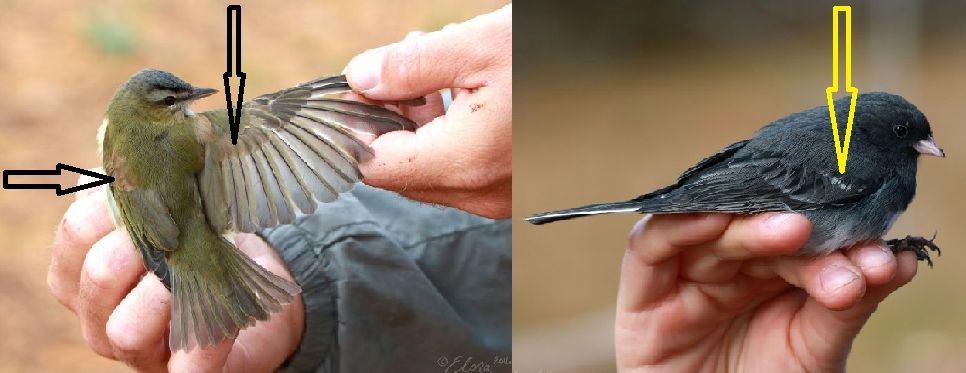
Red-eyed Vireo with rusty tinges and Dark-eyed Junco with wing bars (photos by Elora Grahame).
As long as the banding station is open, we will become more thoroughly acquainted with the “usual suspects” at the wildlife sanctuary. Who’s to say what rarities will stop by during spring migration? We may never know unless they hit the nets!
Elora Grahame graduated from Penn State University in 2103 with a BA in Letters, Arts and Sciences. She started her banding career in 2012 with Northern Saw-whet Owls, then songbirds in 2013, and has worked as an assistant bander with master bander James Junda at Wellfleet Bay through spring and fall of 2016. Recently, Elora changed gears and began working with the sanctuary’s sea turtle rescue team.

